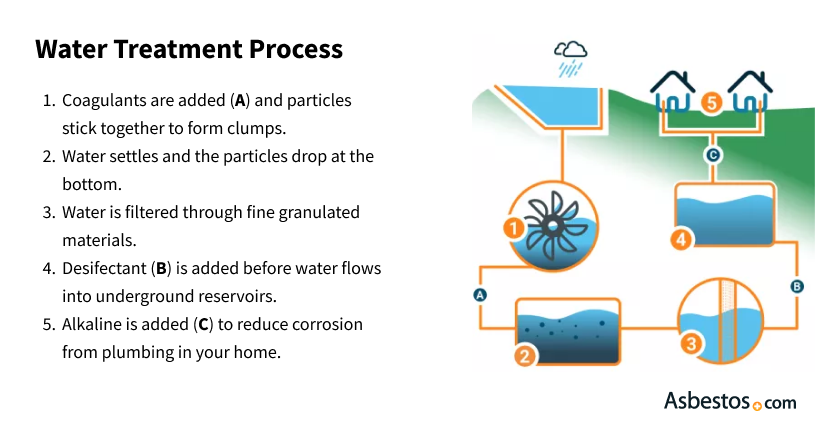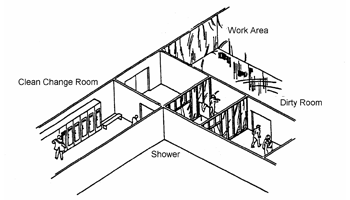Some Known Facts About Asbestos Removal.
Table of ContentsAsbestos Removal Things To Know Before You Get ThisAsbestos Removal - QuestionsGetting My Asbestos Removal To WorkThe 10-Minute Rule for Asbestos RemovalExcitement About Asbestos Removal
3 and 5. 4): Simplification of language, rewording or addition of details to improve clearness Reorganization of steps to enhance flow and clarity Updates to suggestions for air tracking and clearance criteria Special cases (section 5. 5): Simplification of language or rewording to improve clearness New section on treatments for "mechanical abatement" (situations where a structure has been damaged) New section on disposal of asbestos waste that includes suggestions for packaging, transport and landfilling procedures Elimination of content for tasting procedures (transferred to Chapter 7) Minor changes to enhance clarity of language Sampling and analysis: Simplification of language or rewording to enhance clarity Include and upgrade area on bulk tasting previously in Chapter 5 Addition of recommendations connected to using composite samples (bulk tasting) Add and upgrade sections on wipe tasting and vermiculite sampling previously in Chapter 5 Addition of criteria for when area sampling (air monitoring) might be considered New area on polarized light microscopy and point counting methods Brand-new content in intro to area on proficiency testing talking to obligations of labs (provider) Updates to proficiency testing details Other health and wellness factors to consider: Simplification of language or rewording to improve clearness New area on housekeeping Roles and proficiency profiles for work website celebrations improves and updated to show modifications to the OHS Act have actually been updated or gotten rid of, as proper (some links were no longer active).The following chapter does not thoroughly define all required procedures and treatments for the Type 2 and Type 3 operations. For a total list of requirements, please refer to the Guideline. As the risk to workers increases from Type 1 to Type 3 operations, the protective measures and procedures become significantly stringent.
Measures and treatments that prevail to Type 2 and Type 3 operations are described in section 15. Section 16 sets out extra measures and procedures for Type 2 operations and section 17 handle glove bag operations. Area 18 sets out the steps and treatments that, in mix with those discovered in section 15, are to be utilized in Type 3 operations.
Some Known Factual Statements About Asbestos Removal

Drop sheets made of polyethylene or other ideal material that is invulnerable to asbestos should be placed so regarding control the spread of dust from the workspace. Other procedures might also be needed - Asbestos Removal. Prior to starting Type 2 operations the work location need to be recognized by clearly noticeable warning signs.
Everything about Asbestos Removal
In this case the friable ACM should be cleaned up and removed as quickly as access to the workspace, the area above the incorrect ceiling, has been gotten. In many cases the ceiling tiles themselves may meet the meaning of ACM, and must be removed and replaced in accordance with the requirements of the Guideline (paragraph 1 of area 16).

In addition, the ventilation ducts within the work area should be sealed. If the work area is not enclosed by walls, then an enclosure of polyethylene or similar product should be built, where it is practicable to do so (see Figures below). If the enclosure is opaque, one or more transparent window areas should be supplied to allow observation of the whole work location from outside the enclosure.
The mechanical ventilation system serving the workspace must be handicapped and all openings or spaces, including ventilation ducts, should be sealed to separate the workspace from other parts of the office. Surface areas listed below the work area must be covered with drop sheets made from polyethylene or some other appropriate product that is resistant to asbestos.
The Asbestos Removal Ideas
The glove bag must be inspected for damage or problems before it is connected to the pipeline or duct and at regular intervals our website throughout its usage. Source: Building Security Association of Ontario Type 3 operations are divided into work including friable ACM and work involving non-friable ACM. The Regulation sets out measures and procedures for preparing the work location that are common to all Type 3 operations.
All Type 3 operations need to be identified by signs that alert of the asbestos hazard. Asbestos Removal. The indications should be published in sufficient numbers to alert of the risk and needs to also state, in big, clearly visible letters, that access to the work location is restricted to individuals using protective clothes and equipment.
Where wet elimination of asbestos is to be carried out, electrical safety is a crucial factor to consider. The usage of wet techniques increases the potential for electrical shock when working around electrical panels, channels, lighting fixtures, junction boxes and other electrical products. Where practicable, existing electrical power circulation systems that are not water tight need to be de-energized and locked out prior to work starts.
The Only Guide for Asbestos Removal
If a short-term power system needs to be set up to run tools and equipment, it should be equipped with a ground fault circuit interrupter meeting the requirements of the Electrical Safety Authority (ESA). Prior to any of these operations are brought out inside your home, friable ACM that is fallen apart, crushed or powdered and is resting on any surface area in the work area, consisting of furniture, flooring, equipment, machinery and so on, must be about his tidied up and removed utilizing a vacuum geared up with a HEPA filter or by wet wiping.